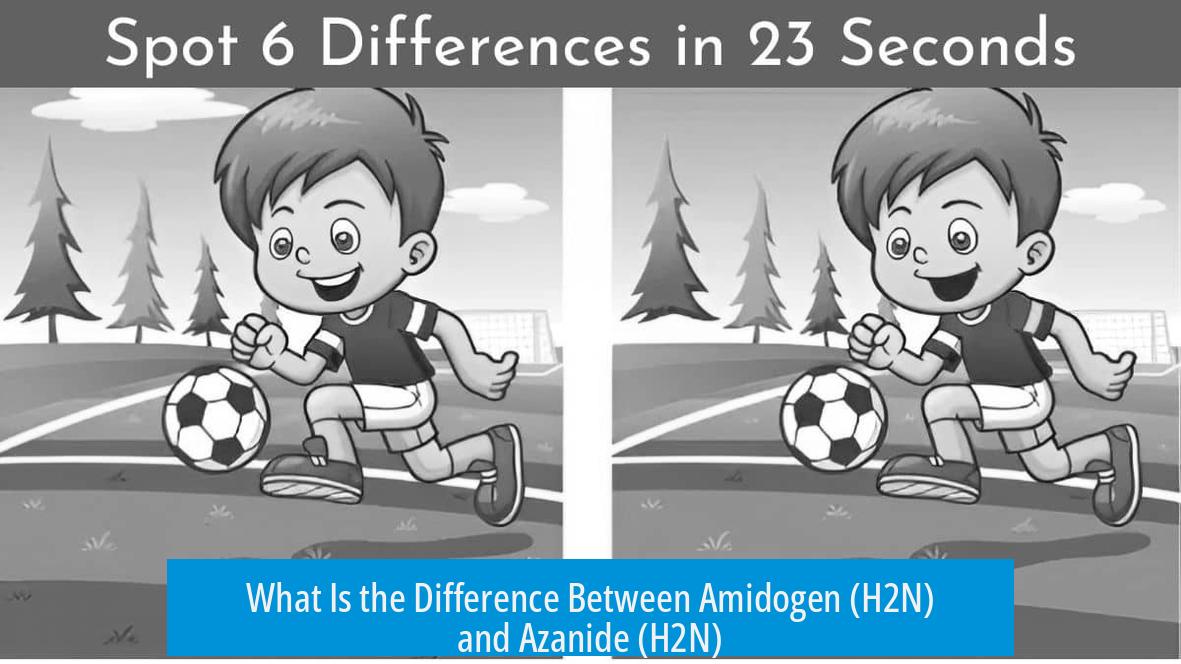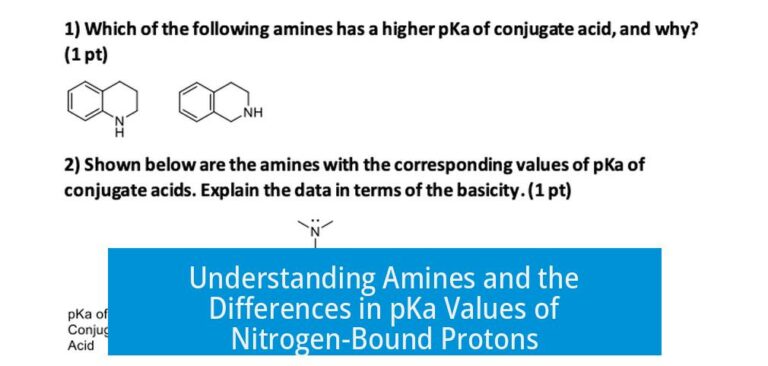What Is the Difference Between Amidogen (H2N) and Azanide (H2N)?
The difference between amidogen and azanide lies in their electronic structure and charge: amidogen (NH2·) is a radical species with an unpaired electron, while azanide (NH2−) is an anion with an extra electron, resulting in a negative charge.
Identification of Amidogen and Azanide Groups
Both amidogen and azanide contain the NH2 formula and are related to amine groups. In chemical structures, NH2 often represents an amine functional group attached to carbon.
Amidogen and azanide groups appear as H2N or NH2 in molecules. This simply expresses that the nitrogen atom bonds with two hydrogen atoms and a carbon atom in typical amines. However, the underlying species they represent differ.
Electronic Structure and Charge Differences
- Amidogen (NH2·): A radical species with one unpaired electron. It is neutral but highly reactive, often short-lived in chemical systems.
- Azanide (NH2−): An anion formed by gaining an extra electron, carrying a negative charge. It is more stable compared to a radical and features in some inorganic and coordination chemistry contexts.
In essence, amidogen has 7 electrons around nitrogen with one unpaired, while azanide has 8 electrons, filling the nitrogen’s valence shell with a negative charge.
Nomenclature and Usage Considerations
In general chemical practice, the NH2 group is referred to as an amine group without subtle distinctions. The terms “amidogen” and “azanide” specify electronic and ionic states that matter in detailed chemical or physical studies but are uncommon in routine organic chemistry nomenclature.
Therefore, while amidogen and azanide differ chemically, the NH2 group in typical organic molecules like amines does not require this detailed partition.
Relevant Clarifications
The described distinction does not apply to compounds simply containing amino groups, such as 1,6-diaminohexane, which has two neutral amine groups. Amidogen and azanide terminology pertains more to the chemical species themselves rather than stable molecular components in common organic compounds.
Key Takeaways
- Amidogen (NH2·) is a neutral radical with one unpaired electron.
- Azanide (NH2−) is a negatively charged anion with an extra electron.
- Both contain nitrogen bonded to two hydrogens, but differ by electron count and charge.
- NH2 in most organic contexts is simply called an amine group without special electronic distinctions.
- Amidogen and azanide distinctions are important in physical and inorganic chemistry, less so in routine organic chemistry.
What is the main electronic difference between amidogen (H2N) and azanide (H2N)?
Amidogen is a radical with an unpaired electron (NH2·). Azanide is an anion with an extra electron (NH2⁻). This extra electron gives azanide its negative charge.
How are amidogen and azanide represented in chemical structures?
Both are shown as H2N or NH2 in molecules. They indicate the nitrogen bonded to carbon, but this notation doesn’t specify if it’s a radical or anion form.
Is the term NH2 usually distinguished as amidogen or azanide in common chemistry?
No, NH2 is typically just called an amine group. The specific radical or anion forms are less commonly differentiated in everyday naming.
Does the difference between amidogen and azanide apply to amino groups in common molecules like 1,6-diaminohexane?
No. In molecules like 1,6-diaminohexane, the NH2 groups are simple amino groups without radical or anion character. The described differences do not apply here.
Why is azanide negatively charged while amidogen is neutral?
Azanide has one more electron than amidogen, giving it a negative charge. Amidogen has an unpaired electron but no extra charge.





Leave a Comment